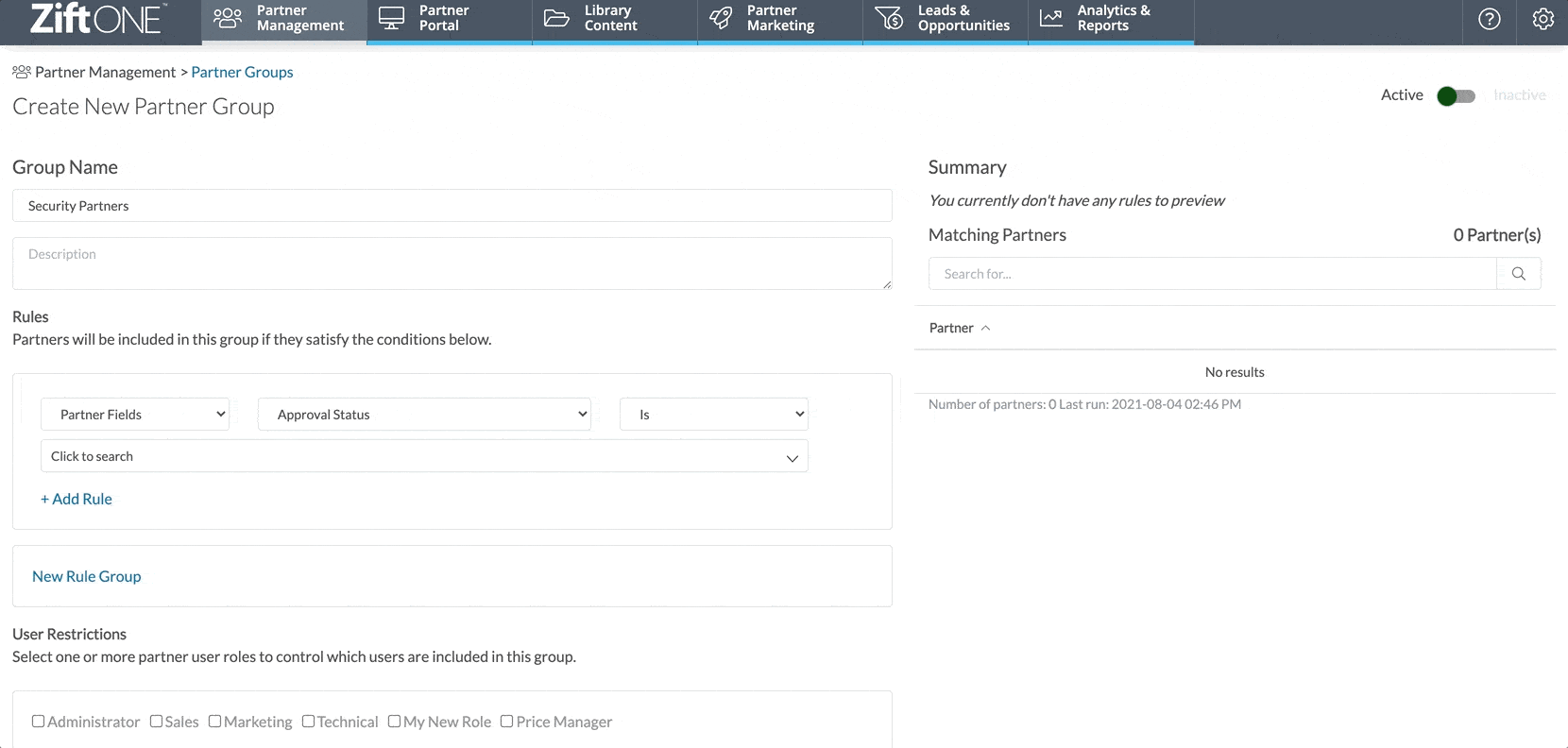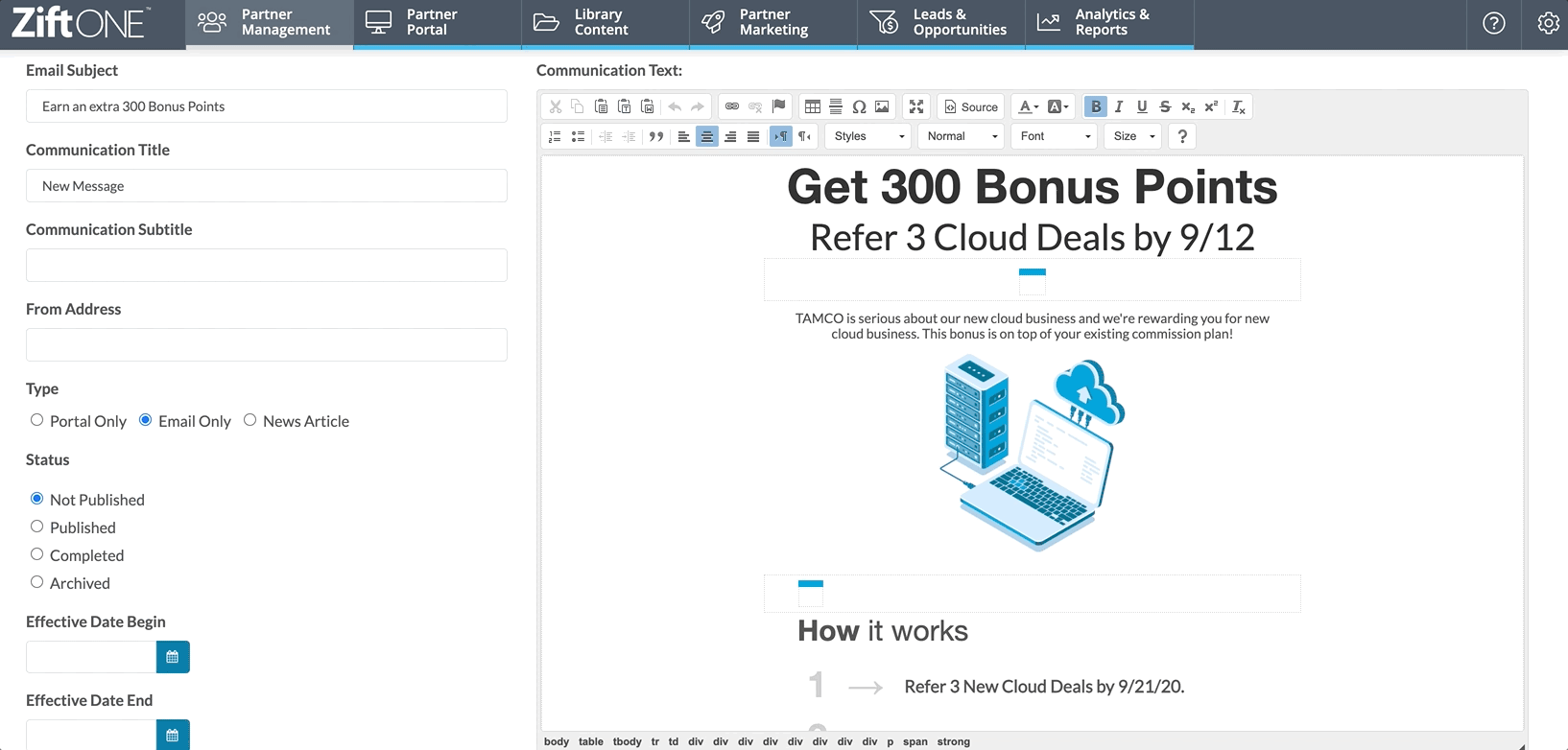Identifying vertical markets in channel partner data yields one particularly powerful result: focus. You can choose to scattershot your partner messaging and hope for the best, or you can find ways to tap into focused marketing efforts to achieve better results.
Vertical Markets Make Great Targets
You can target based on market size, geography, or revenue segments. Oftentimes, the most productive way to target is by specific industry – or, a vertical market.
From your channel partner’s point of view, vertical markets can make setting targets easier and more profitable.
Say your partner sells your product to one of their customers and scopes an extensive delivery and deployment project around it. The next thing they should do is find similar customers and sell to them using the same project. How does this make things easier and more profitable?
- They can build their messaging around something they’ve already done.
- They have an existing case study proving the value proposition.
- The methodology is already built, saving time.
- Since they’ve already done it once, they should be more efficient doing it again. If they charge the same amount as they did the first time, they’ve produced this project more profitably! Next up: rinse & repeat.
There are many ways to identify potential target verticals. You may be able to help your channel partners build campaigns around them. Sometimes, you may even find them in your channel partner’s home base.
Finding the Right Channel Partners for Vertical Markets
Channel partners often invest heavily in taking on specific vertical markets. First, they need to do market research to identify opportune verticals to pursue. Then they need to investigate the issues plaguing that specific vertical, and what companies in that vertical need to solve those challenges. They are usually best served to hire someone with deep experience in that vertical, preferably someone who formerly worked in it. The challenge is finding someone like that who is also a great salesperson.
Sometimes, Verticals Find You!
ZiftONE users have found that there’s much to be learned from analyzing the existing data you have about partners and their customers.
A truly engaged channel partner may be happy to work with you on exploring their data to uncover insights. Here’s one way to do that which may result in a vertical or two finding their way to you:
- You may already be selling into vertical markets and not know it.
- Sort a copy of your partner’s account base by industry SIC code or, at least, by industry type or category.
- Before you can even filter that spreadsheet, you may immediately spot a large number of accounts in the same industry. It may even take your partner by surprise.
Here’s an example of how to sort by industry type within partner portals.
Develop a Vertical Offering
Once you’ve identified a vertical industry in which your partner has several customers, dig out project proposals for any work you’ve done for them. Analyze these carefully for consistencies. What have they done for many of those customers in the same vertical? What have they done well for them?
From these answers, you and your partner can easily fashion a reusable engagement model designed specifically for that vertical. Be sure to identify and build documentation for both sides of the equation:
- What value do vertically aligned customers enjoy from the results of your partner’s project using your product? Turn this into the marketing message, defining it in the context of the customer. What is the value to them?
- Document the methodology, making sure any member of your partner’s team can understand and undertake it.
You can even help build boilerplate proposals ready for use as soon as other members of that vertical show interest.
Earning Buy-In from Channel Partners
Remember that today’s channel partner has little or no expectation of meaningful margin performance from any product. There’s almost always a competitor of theirs willing to discount any product down to basis points.
Instead, today’s channel partner becomes enthusiastic any time a vendor shows them how to wrap more of their own services around the product. This enables them to generate revenue at higher margins and more substantial profits from those service sales. This is one of the easiest ways to earn partner mindshare.
When partners see how much easier it is to sell the same engagement over and over again, that can build trust between you.
Analyzing Channel Partner Data for Vertical Markets
Remember the old story about giving a man a fish and he can eat for a day, but teach him how to fish and he can eat for a lifetime?
The same holds true for unearthing existing verticals hiding deep within customer data. Once they’ve tasted success selling the same vertical engagement repeatedly and more profitably each time, they’ll want to do it again. And again. Now they’ll just keep going back to the well that is their own customer data to find the next vertical.
It’s valuable to remind partners to keep seeking answers in their own data. The value proposition you helped them create at the first engagement should develop and grow as they repeat it. Or, they may find that they’re not speeding up the process and becoming more profitable each time they do the same project over again. Something’s wrong there, and they should work to find out what it is as soon as possible.
Use ZiftONE to schedule communication or reminders with partners.
From a relationship standpoint, the best news is that every time your channel partner sells this engagement, they’ll be selling and appreciating you and your products.
Enabling Channel Partners for Vertical Success
Enabling partners to become more self-sufficient and more productive by mining their own data for sales-generating answers is the best kind of partner enablement.
When they find verticals hidden in their data, it will not be surprising to find that they are the same verticals you’ve been focusing on and building marketing content for. After all, they used your product to win the business in the first place. Help speed their plow by providing them with as much collateral around the vertical as you can. Every statistic they can use in a proposal to convince the next customer of their value proposition is helpful. Every example you’ve documented on how your product helps customers just like them will be convincing.
At the same time, consider having your own technology staff review each partner’s methodology with them, offering to answer any questions they may have about how to make their processes leaner, so they take less time and are therefore more profitable. Help them sell their solution over and over again and deliver it more cost-effectively each time.
Vendors seeking to scale up their partner’s profit performance can start by mining their own customer data to find new avenues of success for their partner enablement framework.
Kelsey Worsham
Kelsey is the Senior Content Marketing and Communications Manager at Zift Solutions.





